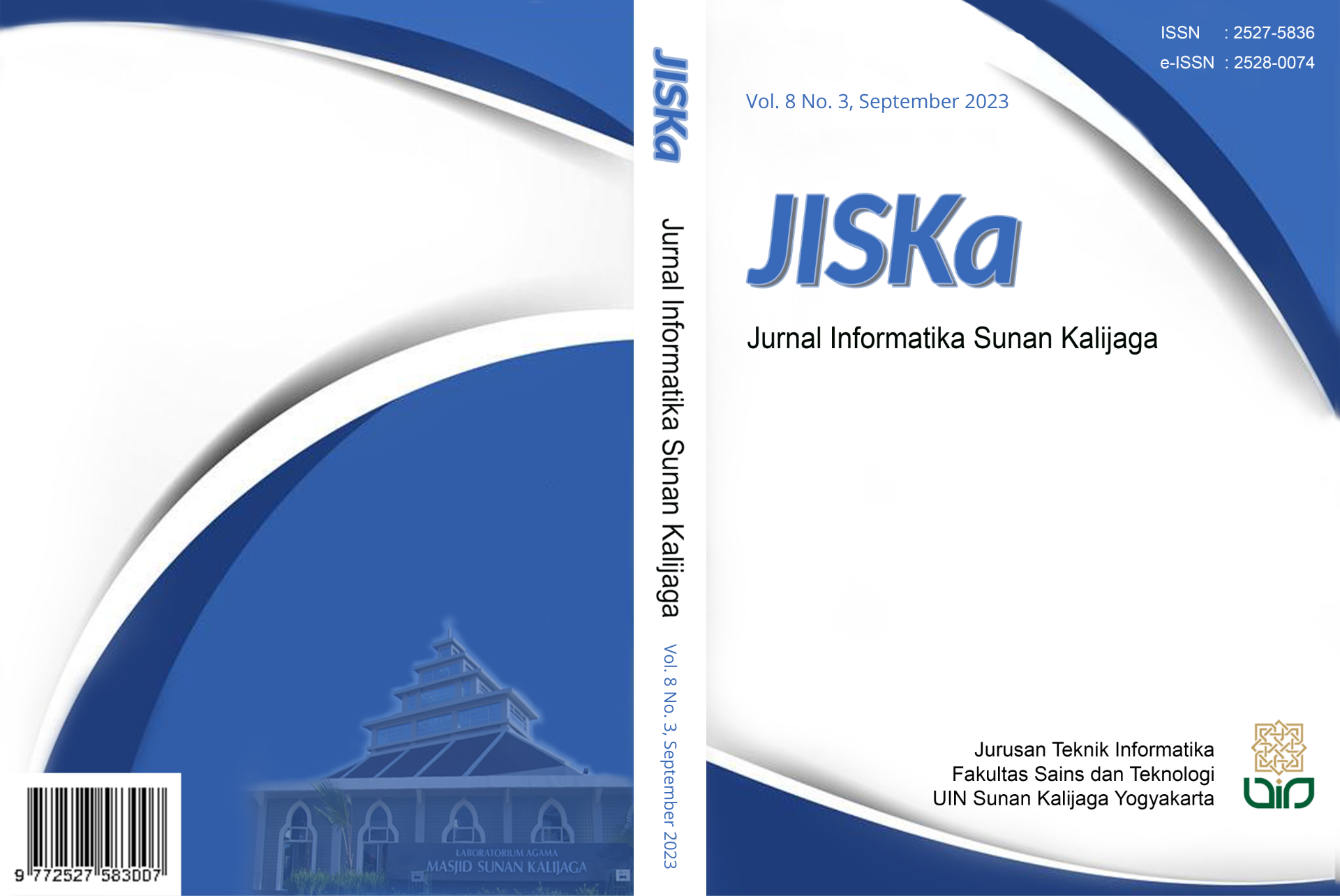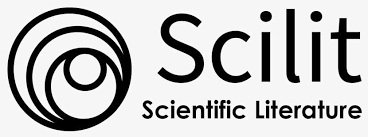Klasifikasi Tingkat Kerusakan Sektor Pasca Bencana Alam Menggunakan Metode MULTIMOORA Berbasis Web
DOI:
https://doi.org/10.14421/jiska.2023.8.3.222-230Keywords:
Classification, MULTIMOORA, DSS, Post Natural Disaster, WebAbstract
During 2020-2021, 10,152 disasters occurred in Indonesia, significantly impacting the affected sectors. The recovery of these sectors needs to be done as quickly as possible to maintain human survival. This study aims to analyze the factors that affect sector damage after natural disasters in Indonesia and measure the classification accuracy. The data used in this research is data from the Regional Disaster Management Agency of Malang City in 2020. This study developed a web-based Decision Support System (DSS) using The Multiplicative Form Integrated MOORA (MULTIMOORA) method. This method is the result of the development of the MOORA method by adding a complete multiplication form to the MOORA method. In this study, the MULTIMOORA method was used to classify the level of damage to sectors after natural disasters. The results showed that using the MULTIMOORA method in this DSS resulted in an accuracy rate of 84% and was included in the good enough category.
References
Almais, A. T. W., Fatchurrohman, F., & Holle, K. F. H. (2020). Implementasi fuzzy weighted product penyusunan aksi rehabilitasi rekonstruksi pasca bencana berbasis decision support system dynamic. JURNAL ELTEK, 18(1), 1. https://doi.org/10.33795/eltek.v18i1.171
Almais, A. T. W., Sarosa, M., & Muslim, M. A. (2016). Implementation Of Multi Experts Multi Criteria Decision Making For Rehabilitation And Reconstruction Action After A Disaster. MATICS, 8(1), 27. https://doi.org/10.18860/mat.v8i1.3480
Almais, A. T. W., Susilo, A., Naba, A., Sarosa, M., Crysdian, C., Tazi, I., Hariyadi, M. A., Muslim, M. A., Basid, P. M. N. S. A., Arif, Y. M., Purwanto, M. S., Parwatiningtyas, D., Supriyono, & Wicaksono, H. (2023). Principal Component Analysis-Based Data Clustering for Labeling of Level Damage Sector in Post-Natural Disasters. IEEE Access, 11, 74590–74601. https://doi.org/10.1109/ACCESS.2023.3275852
Bachriwindi, A., Putra, E. K., Munawaroh, U. M., & Almais, A. T. W. (2019). Implementation of Web-Based Weighted Product Use Decision Support System to Determine the Post-Disaster Damage and Loss. Journal of Physics: Conference Series, 1413(1), 012019. https://doi.org/10.1088/1742-6596/1413/1/012019
BNBP. (2022). Infografis: Kejadian Bencana Tahunan. BNBP. https://gis.bnpb.go.id/
BPS. (2022). Sosial dan Kependudukan : Sosial Budaya: Jumlah kejadian bencana alam menurut kabupaten kota di provinsi jawa timur 2020. Badan Pusat Statistik Provinsi Jawa Timur. https://jatim.bps.go.id/statictable/2021/09/06/2236/jumlah-kejadian-bencana-alam-menurut-kabupaten-kota-di-provinsi-jawa-timur-2020.htm
Cholil, S. R., Pinem, A. P. R., & Vydia, V. (2018). Implementasi metode Simple Multi Attribute Rating Technique untuk penentuan prioritas rehabilitasi dan rekonstruksi pascabencana alam. Register: Jurnal Ilmiah Teknologi Sistem Informasi, 4(1), 1. https://doi.org/10.26594/register.v4i1.1133
Diana. (2018). Metode Dan Aplikasi Sistem Pendukung Keputusan. Deepublish. https://books.google.co.id/books/about/Metode_Dan_Aplikasi_Sistem_Pendukung_Kep.html?id=nJSEDwAAQBAJ&redir_esc=y
Hafezalkotob, A., Hafezalkotob, A., Liao, H., & Herrera, F. (2019). An overview of MULTIMOORA for multi-criteria decision-making: Theory, developments, applications, and challenges. Information Fusion, 51, 145–177. https://doi.org/10.1016/j.inffus.2018.12.002
Hariyati, M., & Astuti, Y. P. (2020). Penentuan Prioritas Rehabilitasi dan Rekontruksi Pasca Bencana Alam dengan Metode Multi Attribute Utility Theory (MAUT) (Studi Kasus : Provinsi Jawa Timur). MATHunesa: Jurnal Ilmiah Matematika, 8(2), 79–88. https://doi.org/10.26740/mathunesa.v8n2.p79-88
Hermawan, R., Habibie, M. T., Sutrisno, D., Putra, A. S., & Aisyah, N. (2021). Decision Support System For The Best Employee Selection Recommendation Using AHP (Analytic Hierarchy Process) Method. International Journal of Educational Research and Social Sciences (IJERSC), 2(5), 1218–1226. https://doi.org/10.51601/IJERSC.V2I5.187
Mahendra, G. S., Wardoyo, R., Pasrun, Y. P., Sudipa, I. G. I., Khairunnisa, Putra, I. N. T. A., Wiguna, I. K. A. G., Aristamy, I. G. A. A. M., Kharisma, L. P. I., Sutoyo, Muh. N., Sarasvananda, I. B. G., Sumpala, A. T., Rasyid, R., & Wahyudi, F. (2023). Implementasi Sistem Pendukung Keputusan: Teori & Studi Kasus. PT. Sonpedia Publishing Indonesia. https://buku.sonpedia.com/2023/05/implementasi-sistem-pendukung-keputusan.html
Sattler, D. N., Claramita, M., & Muskavage, B. (2018). Natural Disasters in Indonesia: Relationships Among Posttraumatic Stress, Resource Loss, Depression, Social Support, and Posttraumatic Growth. Journal of Loss and Trauma, 23(5), 351–365. https://doi.org/10.1080/15325024.2017.1415740
Susanto, A., Latifah, L., Nuryasin, & Fitriyani, A. (2017). Decision support systems design on sharia financing using Yager’s fuzzy decision model. 2017 5th International Conference on Cyber and IT Service Management (CITSM), 1–4. https://doi.org/10.1109/CITSM.2017.8089263
Tripathi, K. P. (2011). Decision Support System Is a Tool for Making Better Decisions in The Organization. Indian Journal of Computer Science and Engineering (IJCSE), 2(1), 112–117. https://www.ijcse.com/docs/IJCSE11-02-01-054.pdf
Downloads
Published
How to Cite
Issue
Section
License
Copyright (c) 2023 Aniss Fatul Fu'adah, Agung Teguh Wibowo Almais, A’la Syauqi

This work is licensed under a Creative Commons Attribution-NonCommercial 4.0 International License.
Authors who publish with this journal agree to the following terms as stated in http://creativecommons.org/licenses/by-nc/4.0
a. Authors retain copyright and grant the journal right of first publication with the work simultaneously licensed under a Creative Commons Attribution License that allows others to share the work with an acknowledgement of the work's authorship and initial publication in this journal.
b. Authors are able to enter into separate, additional contractual arrangements for the non-exclusive distribution of the journal's published version of the work (e.g., post it to an institutional repository or publish it in a book), with an acknowledgement of its initial publication in this journal.
c. Authors are permitted and encouraged to post their work online (e.g., in institutional repositories or on their website) prior to and during the submission process, as it can lead to productive exchanges, as well as earlier and greater citation of published work.










